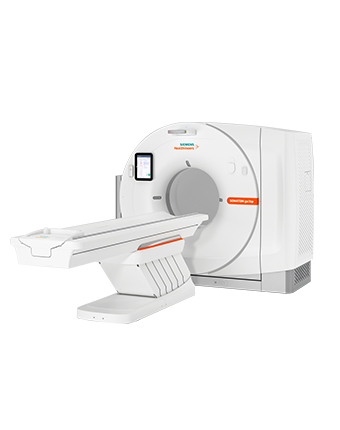Positron Emission Tomography (PET/CT)
Reserve now
Service Description
It is an examination performed on the entire body using a radioactive material along with CT scan to give a three-dimensional image of active areas of the body.
Preparations
- Performing renal function tests (creatinine level) to ensure normal renal function before the CT contrast is injected, it should be up to one week before the examination.
- Performing fasting blood glucose test (FBG) and bringing it with the patient, it should be recent of a maximum of one week prior to the examination, and FBG level should not exceed (200) mg/dl
- It is advisable to do the examination with the following instructions, except in case of a direct request from the treating physician, which are:
- The last chemotherapy session should be at least two weeks ago or more.
- The last radiotherapy session should be at least four weeks ago or more.
- Needle guided biopsy should have been taken at least a week ago or more.
- Any surgical intervention should have been performed at least four weeks ago or more.
- Take the usual medication in the days before the examination.
- Ensure that the patient's weight is not more than 200 kg.
- Avoid eating certain types of food (carbohydrates - smoking - coffee) and avoid excessive muscle exertion/exercise within 24 hours of the examination.
- Complete fasting 6 hours before the examination, i.e. with permission for drinking water only, and if the patient’s condition requires anesthesia, he is forbidden to drink water too.
- The patient must bring all previous radiological and laboratory investigations and medical reports (including previous PET CT studies) for proper patient evaluation and in order to perform an accurate comparison study.
- The patient must bring the result of the previous pathology if any.
- For women:
- You must make sure that there is no pregnancy before performing the examination.
- Not to wear metal objects and gold jewelry such as (earrings - chains ...)
How the scan works:
- Patients are admitted for examination with the priority of attending the center.
- The patient or one of his relatives is interviewed with a doctor to obtain the medical history and purpose of examination.
- A random blood glucose analysis is done at the center to ensure that the blood glucose level is within the acceptable value.
- The patient is injected with the radioactive substance through a cannula and then wait in a special waiting room for a maximum of 90 minutes for the radioactive substance to be absorbed by the body, knowing that the substance has no side effects and does not cause any pain to the patient.
- The patient is then admitted to the examination room for 30 minutes, to be injected with a CT contrast (if applicable) and complete the examination.
After completing the examination:
- Due to the possible presence of children and pregnant women in the patients' waiting area, so please leave the center immediately after completing the examination.
- The patient can eat foods and is encouraged to drink a large amount of water and liquids after the examination.
- The patient is kept away from children less than 6 years as well as pregnant women for a period of no less than 24 hours.
Booking method:
Attendance is made to the center to pay for the price of the radioactive material reservation, which is (2000 LE) pounds, and to bring the required previous radiological and laboratory examinations.
Notice:
If you want to cancel the reservation or postpone the examination for another day, you must come to the center before the appointment by at least 24 hours, otherwise, the reservation payment will be deducted due to the high cost of the radioactive material.
Timing
The examination takes around 45 mins avg.
Service consultants
Service devices


